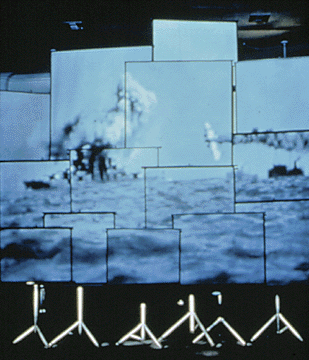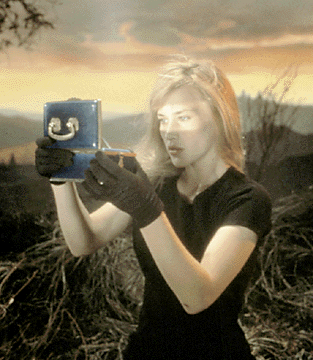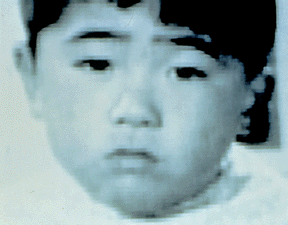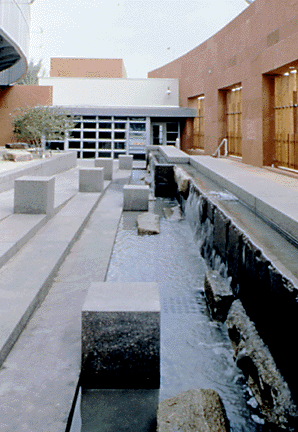


A new pavilion for the first museum
By Tim Ryan
in the United States dedicated to share
the story of Americans of Japanese ancestry
opened Saturday in Los Angeles
Star-BulletinLOS ANGELES -- Silver-haired Bill Shishima stands in a section of a rough timber framed shack, his eyes gleaming but downcast, hands folded in front.
"This was where my family spent a year (during World War II) in this 20-foot-by-24-foot barrack room at the Heart Mountain Relocation Center in Wyoming," he says during a tour of the new Japanese American National Museum Pavilion in Los Angeles. "I was 11 years old; there were seven of us. I remember it was very cold during the winter; very cold. After the first winter they insulated the barracks for us."
The barracks -- living spaces for thousands of Japanese families interred during the war -- were 120-feet long and 40-feet long. Families with up to three members were put in the smallest rooms, a 20-by-16-foot space.

The one-third section of barracks that brings back a flood of memories was retrieved from the Wyoming farm where the relocation center was located, and is just one of several exhibits in the 84,000 square-foot, $56-million state-of-the-art Pavilion which opened Saturday in downtown Los Angeles' Little Tokyo.Funding for the museum came primarily from private donors, and included more than $3 million from some 5,500 museum members in Hawaii.
The museum's exhibits are testimony to Japanese Americans' survival, loyalty to their culture, county and family, and represent triumph over government-instituted racism of the past.
This inaugural year the theme at the Japanese American National Museum is "Celebrating the American Experience," beginning with the story of Japanese immigration to the United States, and continuing many generations later with emphasis on the war years, internment and Hawaii's significant role in those stories.

The extensive "Common Ground" exhibit is an historical overview using an array of documents, photos, and artifacts dating to the turn of the century.The permanent display, "Immigration: Japanese pioneers in Hawaii," explains the history of Japanese laborers, illustrating plantation life with photos of lines of newly arrived Japanese walking a gangway at Honolulu Harbor, as well as a display of various tools, pots and pans, a weighty iron and well-used washboard.
Signs throughout the exhibit are printed in English, Japanese and Spanish. In one section it is explained that the Japanese were the last group imported in the 19th century to Hawaii and received "the worse housing and lowest wages," below that of Chinese and Portuguese.

The museum's mission, explains executive director Irene Hirano, is "to make known the Japanese American experience as an integral part of our nation's heritage in order to improve understanding and appreciation for America's ethnic and cultural diversity."It's the first museum in the United States dedicated to sharing the experience of Americans of Japanese ancestry. "The mission" will be accomplished through the museum's comprehensive collection of Japanese American objects, images and documents, as well as educational programs, films and publications, Hirano said.
"The Museum is dedicated to sharing the Japanese American story with a national and international audience," she said. "This place is for everyone."
Hawaii led the way
The story of Japanese Americans in Hawaii, featured in numerous exhibits throughout the second-floor galleries, is crucial to understanding the progress of Japanese everywhere.Except for Ellis Island on the East Coast, Hawaii was the only other place where Japanese were allowed to enter the United States, said Rene Tomita, the museum's campaign manager in Hawaii. She said that in many ways Hawaii's Japanese led the charge nationwide for their brethren in labor reforms as depicted in the "Brothers Under the Skin: The Labor Movement in Hawaii" exhibit; assimilation into the U.S. political scene, evidenced in an exhibit mostly dedicated to Sens. Dan Inouye and Spark Matsunaga; and the war effort with the celebrated 100th/442nd Regimental Combat Team illustrated by an immense framed casement of war medals that includes a Congressional Medal of Honor, Distinguished Service Crosses, Silver Stars, Bronze Stars and Purple Hearts.
Scattered about the extensive World War II and internment exhibits are heart-touching reminders of just how American Japanese Americans behaved even while interred.

Large black-and-white pictures taken at the camps show internees playing baseball and basketball, wearing American sports' jerseys, a beauty contestant sitting on a stool wearing a paper crown that reads "Queen of Manzanar."There also are stark reminders of the bigotry and fear of the Japanese that existed then, including a political candidate's poster that reads "Keep California White;" a sign, "Jap Hunting License issued here, open season now, no limit"; and "American Farmers ... Japs or Hindus not wanted."
Actor George Takei of "Star Trek" fame and a member of the museum's board of directors said the museum can serve as a constant reminder that the U.S. Constitution is "only as strong as the people who protect it.
"We were interred because we looked like the enemy, although 70 percent of us were American citizens," he said. "Due process for us disappeared."
Takei was 4 when his parents and two siblings were sent "to the swamps of Arkansas" then Tule Lake, Calif., from their home in Little Tokyo.
"My parents lost everything," he said. "The more important thing to remember is not that this interment happened to Japanese Americans but to our Constitution."
Local Japanese fared better
Hawaii's Japanese Americans may have more to learn from the museum than they realize, Tomita said. That's because for the most part few Japanese Americans in Hawaii were sent to internment camps. Since this ethnic group comprised 40 percent of Hawaii's population, shipping them away would have created too much economic hardship on the islands, Tomita said."In fact, the story of Japanese Americans across the U.S. differs tremendously region to region," she said. Her parents lived on a plantation in Hilo during the war so they weren't affected at all by what happened on the West Coast.
Cayleen Takabuki, born in Waipahu, and the museum's director of education and programming, agrees. She knew little of the struggle of Japanese Amer-icans on the mainland until she started working at the museum. And that information led her to learn about her parent's experiences on Oahu during the war.
Takabuki's parents were relocated from Waiau on Oahu to the current site of Pearl City High. "The whole neighborhood was evicted and had to remain in the hills for 18 months, but my mother never talked about it until I learned what had happened in Cal-ifornia and started asking questions," she said. "I had assumed she wasn't affected by the war."
Tomita said many stories of Japanese Americans' experience have been lost and the museum is trying to find and tell those stories.
"I have a 12-year-old daughter and I would like her to know more about her history, all of her history, not just what happened in Hawaii.
"The older generation is not inclined to volunteer information unless they're asked. We're asking."
Exhibits
Common Ground: The Heart of the Community -- Presents the life histories of multiple generations of the Japanese Americans. It explores the ways Americans of Japanese ancestry settled and forged their identity, contributing to the redefinition of the United States over 130 years.
Works on view include artifacts, photographs, film footage and letters from the turn of the century through World War II. There is also documentation of a reclaimed Heart Mountain barracks, where Japanese Americans were incarcerated during WW II; a western-style wedding dress made of Japanese silk; a Japanese American's Dodgers baseball uniform; and other artifacts. Also, participate in an internet chat room and a multiple-screen video presentation with music by the jazz-fusion group Hiroshima is featured. Continues through February, 2001.
Bruce and Norman Yonemoto: Memory, Matter and Modern Romance -- Since 1976, the Yonemotos have created an extensive body of film, single-channel video, video installations, and objects that explore the creation of identity through film and media. This exhibition will be on view through July 4.
On view is "Silicon Valley," which combines film and television footage projected onto a large white screen. Having grown up in the Santa Clara Valley before the technological expansion turned it into "Silicon Valley," the Yonemotos use their experience to create another interpretation of the Cold War icon of "total destruction."
The brothers also are screening selections from their single-channel videos and films, including five video-projected programs of 10 works: Made in Hollywood (1990) featuring Patricia Arquette and Ron Vawter; Green Card: An American Romance (1982); and Kappa (1986), a collaborative effort with Mike Kelley that inserts Kappa -- the malevolent Shinto god of fresh water -- into the Oedipus myth played out in postmodern L.A.
Museum features
More than 18,000 square feet of exhibition space, an outdoor terrace and an orientation theater.
Life History Studio used to record the life histories of families and individuals.
Two education centers for educational and public outreach programs.
Two-story central hall for temporary exhibits, lectures and special events. It is equipped with audio-visual capabilities, including two large screens for video displays, lighting and sound systems.
Stone and water garden
The Japanese American
National MuseumWhere: 369 East First St., in the Little Tokyo Historic District in Los Angeles
Hours: 10 a.m. to 5 p.m. Tuesdays and Wednesdays and Fridays through Sundays; 10 a.m. to 8 p.m. Thursdays. Closed Mondays and on major holidays.
Cost: $6 for adults, $5 for seniors 62 and over, $3 for students with ID, and free for members and children under 5. Free from 5 to 8 p.m. Thursdays and all day on the third Thursday monthly.
Call: (213)-625-0414 for reservations and membership information.
Click for online
calendars and events.